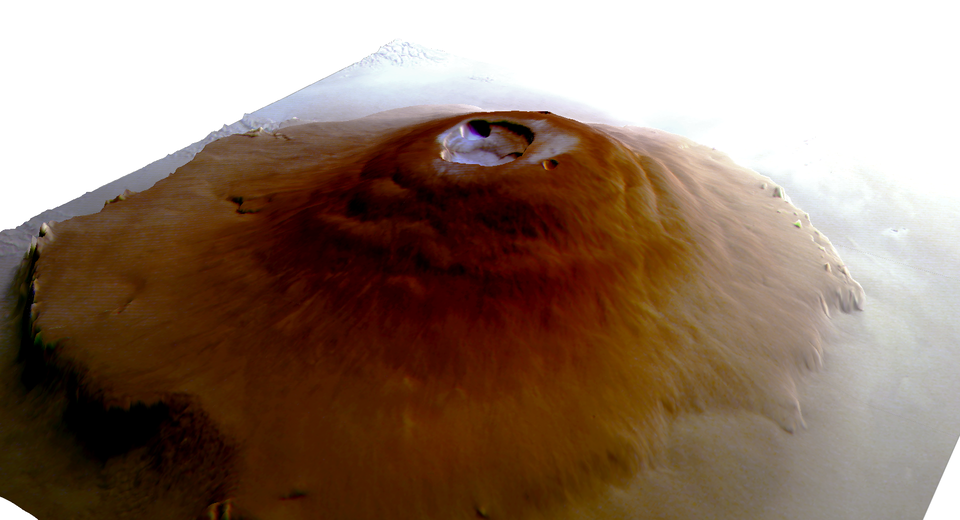Newswand: ESA’s ExoMars and Mars Express missions have spotted water frost for the first time near Mars’s equator, a part of the planet where it was thought impossible for frost to exist.

The frost sits atop the Tharsis volcanoes: the tallest volcanoes not only on Mars but in the Solar System. It was first seen by ESA’s ExoMars Trace Gas Orbiter (TGO), and later by both another instrument aboard TGO and ESA’s Mars Express.
“We thought it was impossible for frost to form around Mars’s equator, as the mix of sunshine and thin atmosphere keeps temperatures relatively high at both surface and mountaintop – unlike what we see on Earth, where you might expect to see frosty peaks,” says lead author Adomas Valantinas, who made the discovery as a PhD student at University of Bern, Switzerland, and is now a postdoctoral researcher at Brown University, USA.
The patches of frost are present for a few hours around sunrise before they evaporate in sunlight. Despite being thin – likely only one-hundredth of a milli metre thick (as thick as a human hair) – they cover a vast area. The amount of frost represents about 150,000 tonnes of water swapping between surface and atmosphere each day during the cold seasons, the equivalent of roughly 60 Olympic swimming pools.
A peculiar microclimate
The Tharsis region of Mars hosts numerous volcanoes, including Olympus Mons and the Tharsis Montes: Ascraeus, Pavonis and Arsia Mons. Many of these volcanoes are colossal, towering above the surrounding plains at heights ranging from one (Pavonis Mons) to three (Olympus Mons) times that of Earth’s Mount Everest.
These volcanoes have calderas, large hollows, at their summits, caused as magma chambers emptied during past eruptions. The researchers propose that air circulates in a peculiar way above Tharsis; this creates a unique microclimate within the calderas of the volcanoes there that allows patches of frost to form.
“Winds travel up the slopes of the mountains, bringing relatively moist air from near the surface up to higher altitudes, where it condenses and settles as frost,” says co-author Nicolas Thomas, Principal Investigator of TGO’s Colour and Stereo Surface Imaging System (CaSSIS) and Adomas’s PhD supervisor at the University of Bern. “We actually see this happening on Earth and other parts of Mars, with the same phenomenon causing the seasonal martian Arsia Mons Elongated Cloud.
Adomas, Nicolas and colleagues spotted frosts on the Tharsis volcanoes of Olympus, Arsia and Ascraeus Mons, and Ceraunius Tholus. Modelling how these frosts form could allow scientists to reveal more of Mars’s remaining secrets, including where water exists and how it moves between reservoirs, and understanding the planet’s complex atmospheric dynamics. Such knowledge is essential for our future exploration of Mars, and our search for possible signs of life beyond Earth.
“Finding water on the surface of Mars is always exciting, both for scientific interest and for its implications for human and robotic exploration,” says Colin Wilson, ESA project scientist for both ExoMars TGO and Mars Express.
…
